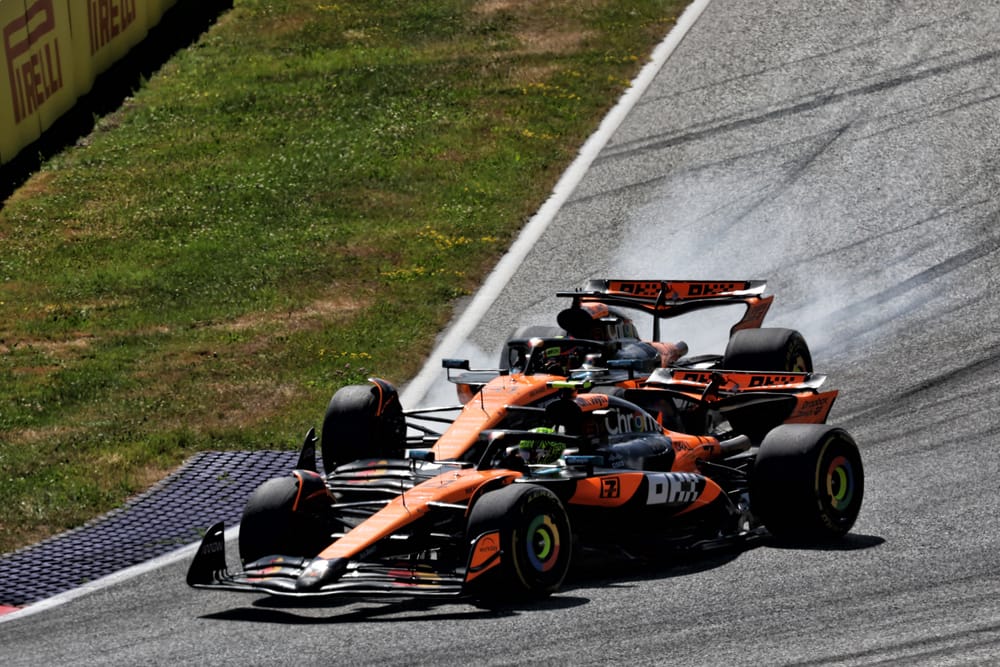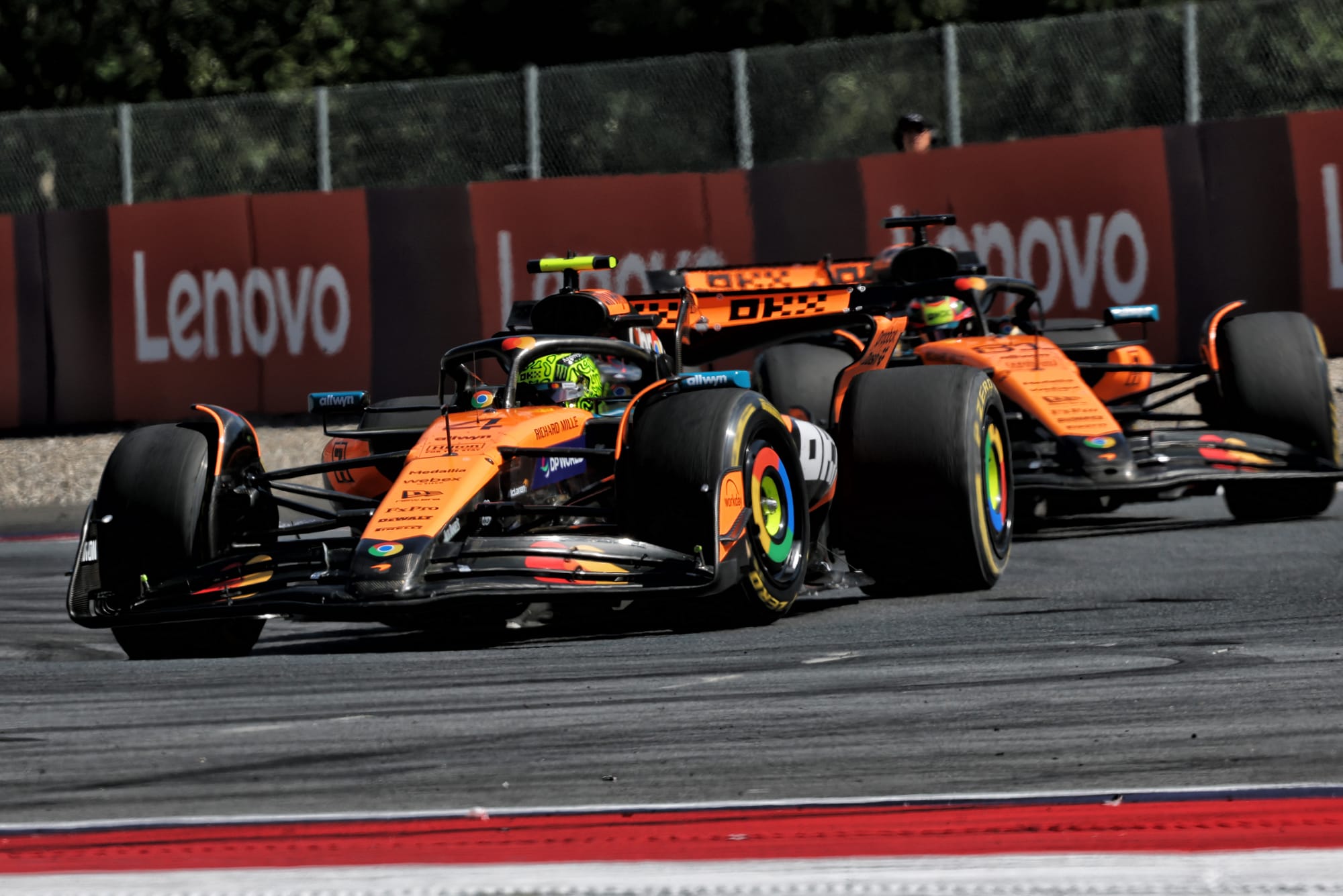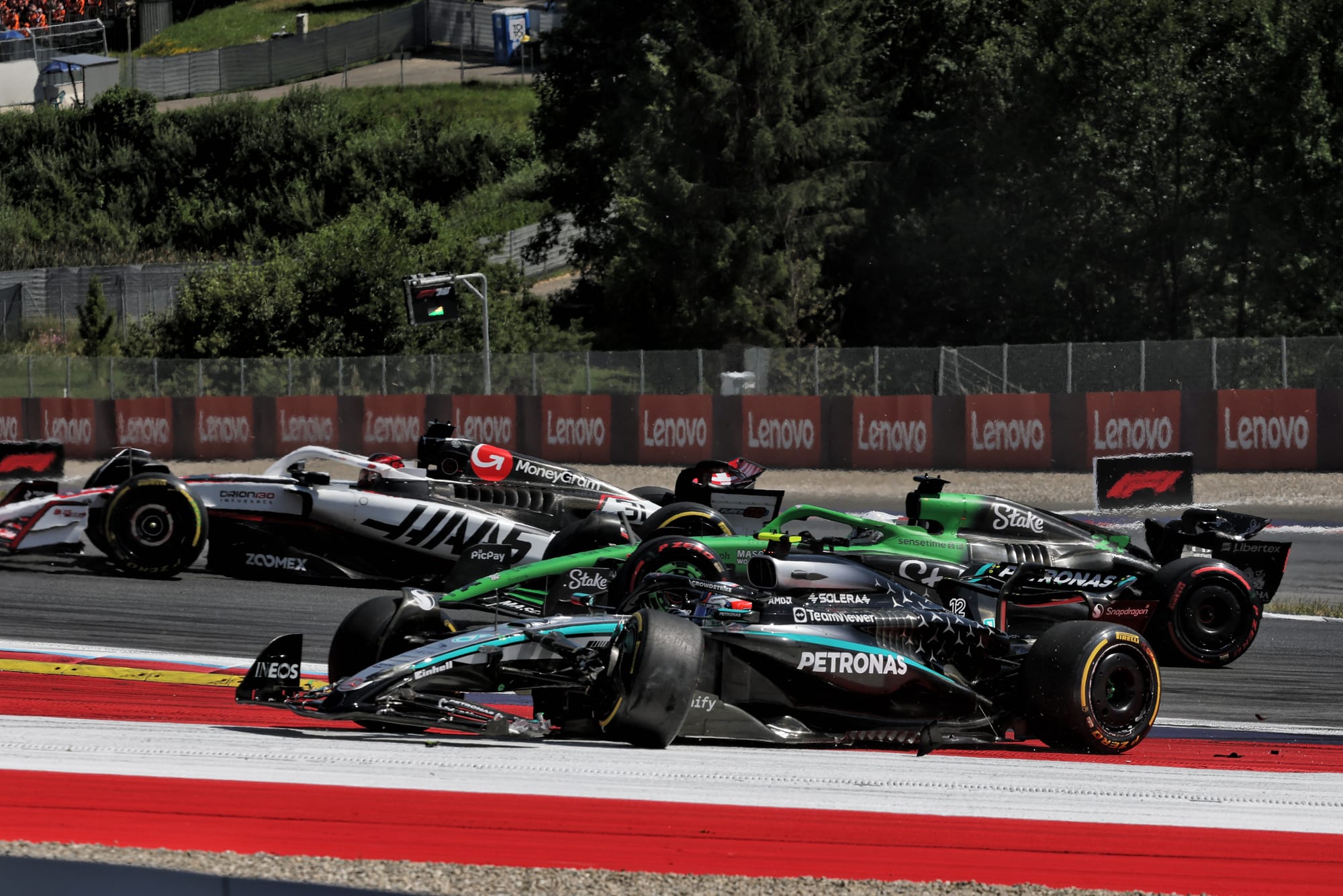The reason McLaren felt Oscar Piastri's attempted move on Formula 1 team-mate Lando Norris in the Austrian Grand Prix was too marginal revealed an interesting contrast in how it viewed that near-miss compared to their collision at the previous race in Canada.
McLaren felt Piastri was not "fully in control" when he locked up avoiding contact with Norris at Turn 4 as they fought fiercely for the race lead in the first stint of the Red Bull Ring race.
After several laps of following closely, and the two even briefly swapping positions at one stage, Piastri tried a late dive on Norris into the downhill right-hander that nearly went wrong.
He was given feedback from the pitwall after his first pitstop that the move was too marginal. Piastri agreed, and even apologised for it on the radio post-race.
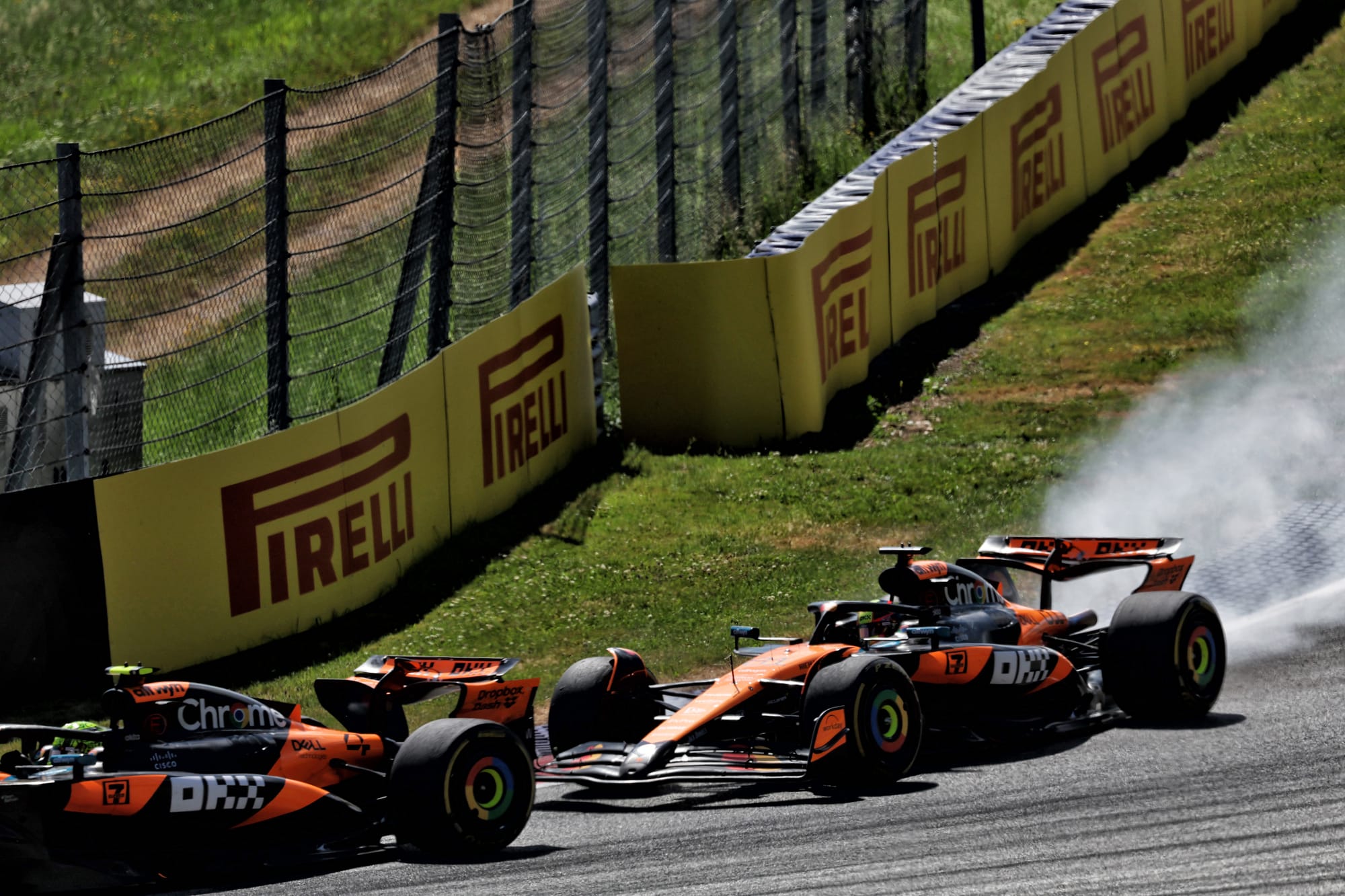
When asked by The Race to explain what it was that turned this into a "marginal" move, beyond simply the outcome of the two almost colliding, team boss Andrea Stella said: "The fact that Oscar acknowledged, and said that he was sorry for that situation, means that he knew that, especially at that phase of the stint when your front tyres are quite aged, if you go for that gap, you may be not entirely in control of the car. You may lock up.
"The issue that I saw there is that the tyres were locked and with a lock-up you lose control of the car, and we don't want now the proximity of the two cars being determined by something that we are not fully in control of.
"That's our interpretation, which I think coincides with the interpretation of Oscar.
"And from every situation, we will take the opportunity to review. We do it together. The conversations are always very good and constructive, and we will fine-tune even more for the future."
This occurred one race after Norris drove into the back of Piastri in Canada, an incident for which Norris took full responsibility for and immediately apologised to the team and Piastri.
That clash ended with Norris retiring immediately, so there was no opportunity for him to receive a public message effectively warning him about the move in the way Piastri received one in Austria.
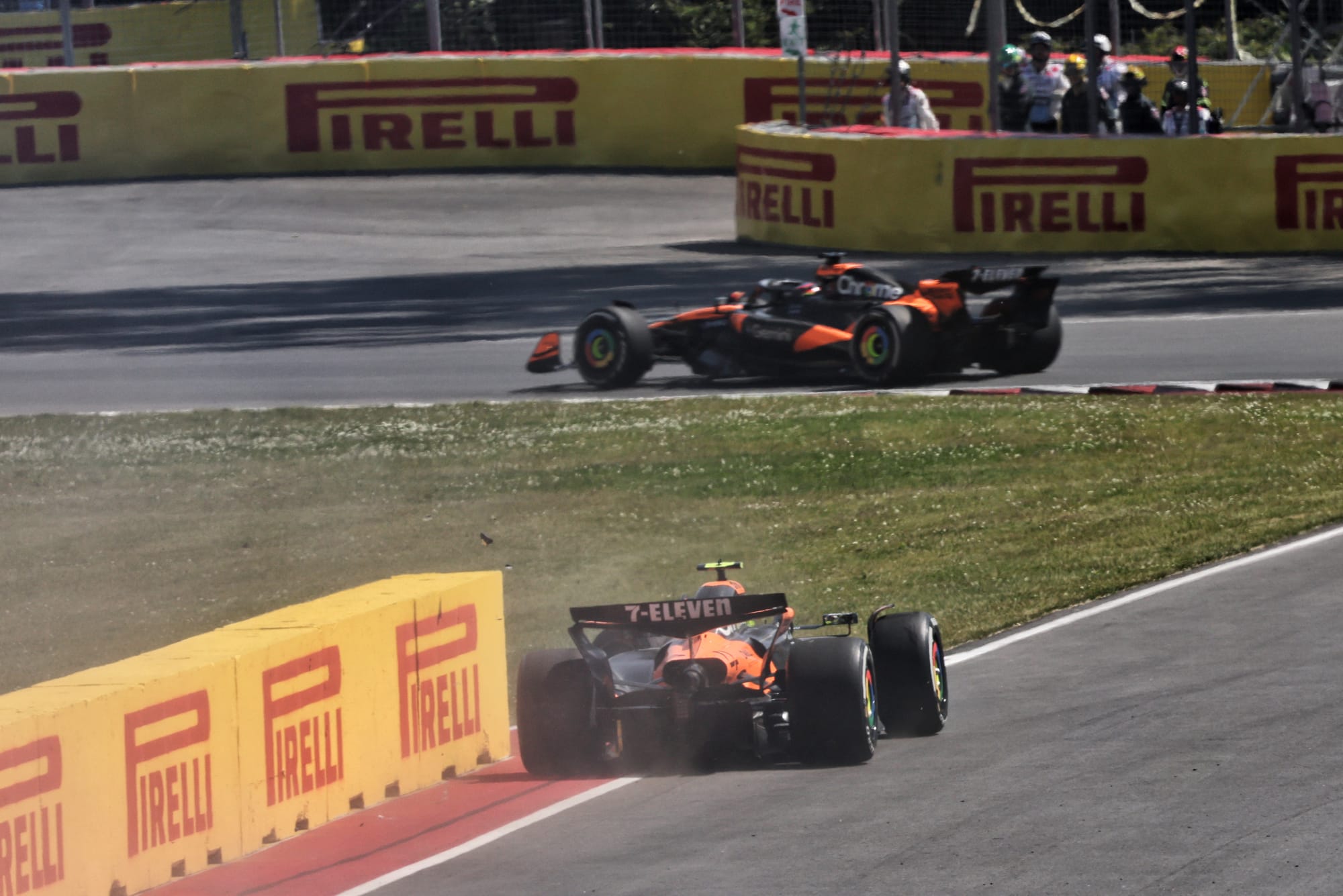
However, it seems McLaren would not have considered one necessary anyway. As Stella's explanation in Austria indicated McLaren views the nature of the two clashes as being quite different.
While the assumption would be that Norris crashing into the back of Piastri and wrecking his own race was worse than a near-miss that did not actually involve contact, McLaren considered the Piastri move in Austria a more aggressive one - whereas Stella twice referred to what happened in Canada as "benign".
He said Norris made a misjudgement that was, it turns out, partly a result of getting caught out by the closing speed of the two cars because Piastri's MGU-K stopped deploying as the battery ran out of energy at the end of the lap.
By comparison, in Austria, Piastri actively chose to make a move that ended up being too close for comfort.
"It's all very clear," Stella said. "I am so refreshed by how the team reviewed the situation in Canada, which was a benign situation. It was just a misjudgment.
"And we have come out stronger and even more united from there."

Piastri had no issue with McLaren telling him he had been too marginal. He called it a "fair comment" because "locking up and missing the back of your team-mate by not a lot is pushing the boundaries".
"Even if I hadn't been told anything, I didn't think it was a wise decision to try that one again," he said.


